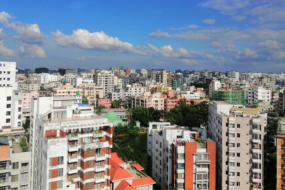As brands across cities are fine tuning their strategies for physical store presence, to expand their footprint with experience, the future malls are set to be less transactional and more inventive to give unique and innovative experience to shoppers.
A recent report by CBRE , India’s leading real estate consulting firm- ‘The Retail Perspective on Experience and its Impact on Real Estate’ highlights that relevant and viable online retail may not suffice to satiate retail needs as outing, experience, and leisure are critical factors needed to balance the retail equation and will continue to draw in-store shoppers.
The reports says that as the pandemic ebbs, the Indian retail space is witnessing growing footfalls across retail and recreational spaces. The retail sector made a robust recovery in Q2 2022, with transaction activity growing by more than 100% on a Q-o-Q basis; overall, in H1 2022, it reported massive growth of more than 160% (Y-o-Y), according to CBRE Q2 market monitor. This growth resulted from pent-up demand causing a renewal in physical retail visits even as online shopping continued to perform strongly.
| Experiential retail spaces
The report states that the experience was a critical factor driving how retail spaces were designed even before the pandemic. However, following the pandemic, the productivity of retail spaces came into sharper focus, with ‘experience’ becoming more crucial due to its ability to increase customer engagement and not just sales. As a result, experiential retail is currently counterbalancing the prevalence of e-commerce and ensuring profitability by increasing the brand’s physical presence. |
Most popular reasons for in-store shopping |
This can be advantageous given the pent-up demand from customers who, following the two-year COVID-19-induced isolation, are now increasingly becoming active in the physical realm. These customers are now looking for engaging, immersive, and convenient experiences that give them a reason to visit stores rather than make purchases online.
Across cities, brands are resizing and recalibrating their physical store strategies to diversify their portfolio and expand their footprint, with ‘experience’ fast becoming an important frontier to bridge the retailer-consumer gap. H1 2022 saw more than 500% increase in project completions compared to a year ago. These positive sentiments are expected to sustain in the near term even as retailers explore innovative means to attract consumers and drive sales on both online and offline fronts.
According to , Anshuman Magazine, Chairman & CEO – India, South-East Asia, Middle East & Africa, CBRE , “Physical retail locations must evolve into places where people want to go rather than have to go if they are to succeed in the future. While there are reasons to believe that retail business activity has already moved towards pre-pandemic levels, COVID-19 has modified consumer priorities. It is therefore imperative to deliberate on how real estate stakeholders can improve their spaces to enhance the experience quotient and subsequently value.”
Ram Chandnani, Managing Director, Advisory & Transactions Services, CBRE India, says that In the current scenario, it is imperative to figure out how players in the retail space can improve physical experiences. CBRE suggests a multi-pronged approach for doing exactly that . This consists of diversification of store formats and functions, leveraging data science to develop customized location strategies based on the catchment, repurposing existing stores, creating a personalized experience, and developing fruitful partnerships. Moving forward, embracing digitization to amalgamate traditional retail will be imperative.
Solutions real estate developers can adopt

Retailers are starting to favor more dynamic and flexible leases as they search for more adaptable and responsive networks to meet rapidly changing consumer expectations. This is driven by the demand for plug-and-play retail outlets, particularly for small and independent firms. Additionally, showrooms with personalized designs are becoming more and more popular as retailers try to forge stronger bonds with customers by constructing “stories” or “journeys” around their stores.
Going forward, we may well see the evolution of thematic design to attract footfalls with a compelling visual experience through building architecture, art installations, and other décor. As part of their strategy developers can also consider the real estate-as-a-service (REaaS) approach, which combines strategy, technology, and data to deliver digital and physical services and not just space to tenants and users.
The malls of tomorrow would need to be less transactional, more inventive, inclusive and committed to creating something unique for shoppers. Placemaking can drive value for an asset by adding more F&B and entertainment-focused tenants in a Gen Z-dominated catchment area.The fulfilment experience has become the new battleground for retailers across categories and is witnessing constant transformation and innovation. Although all parameters indicate that physical retail will be the dominant way to drive sales and experience, retailers need to better understand the factors driving experience.



